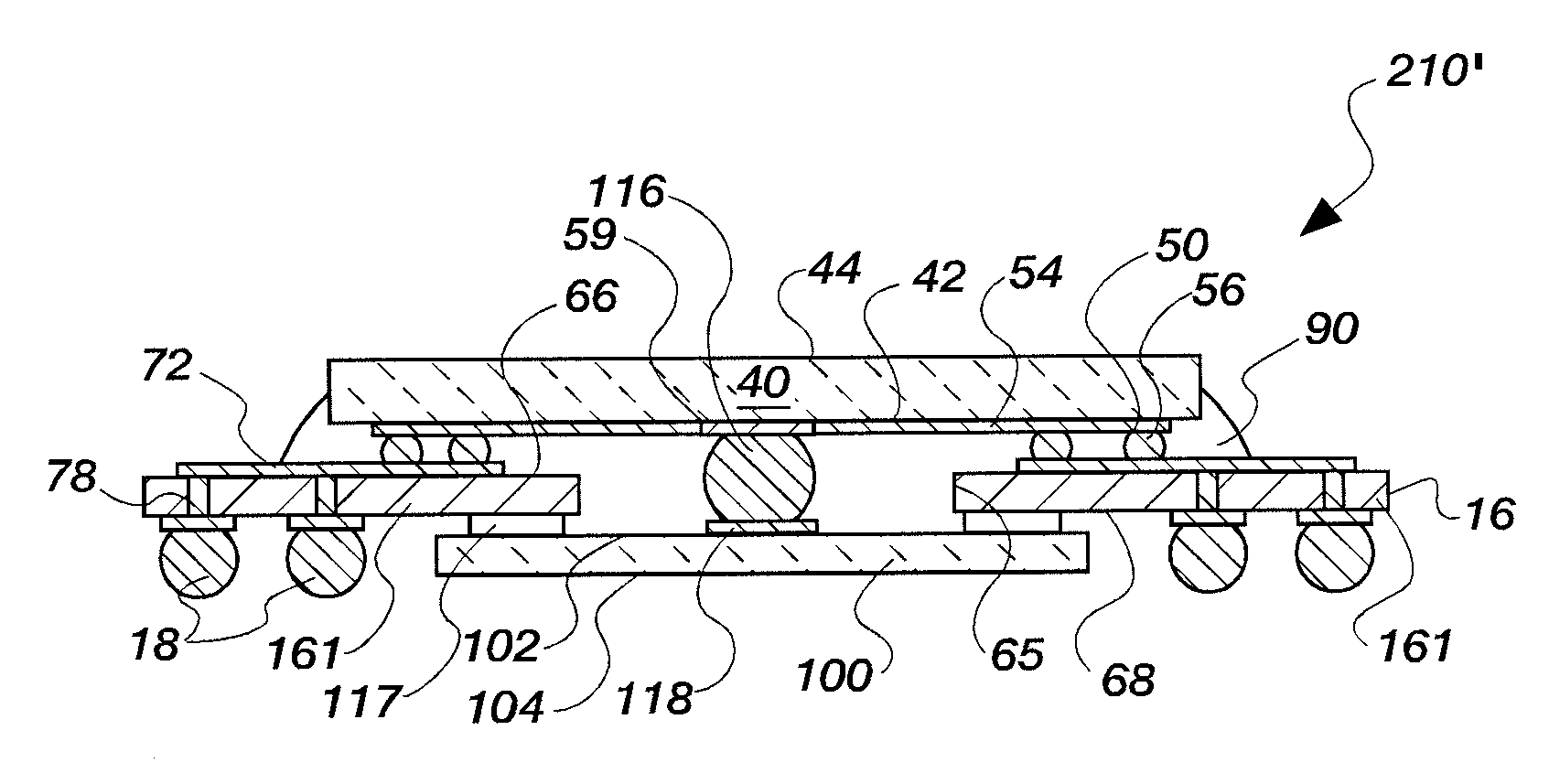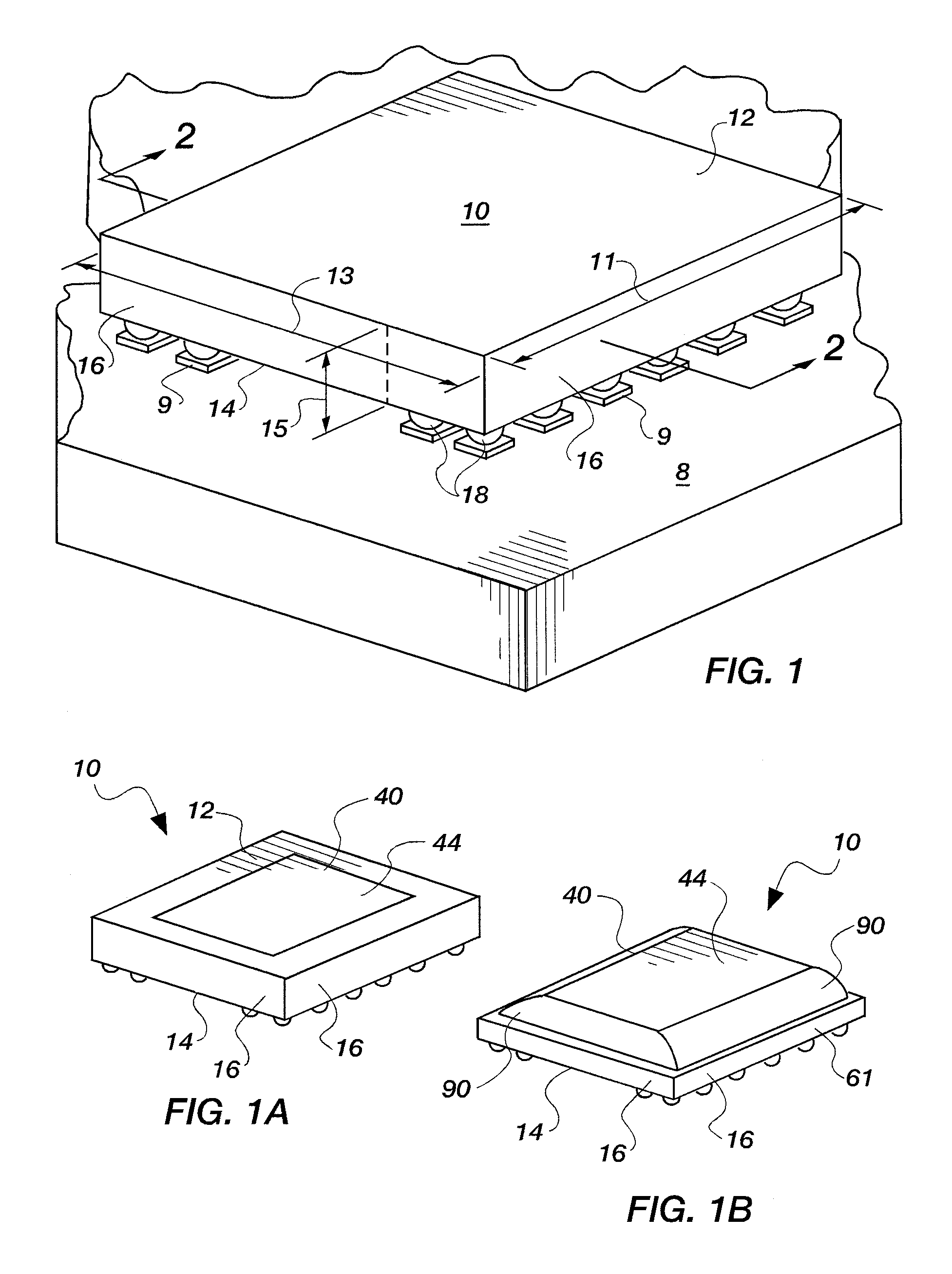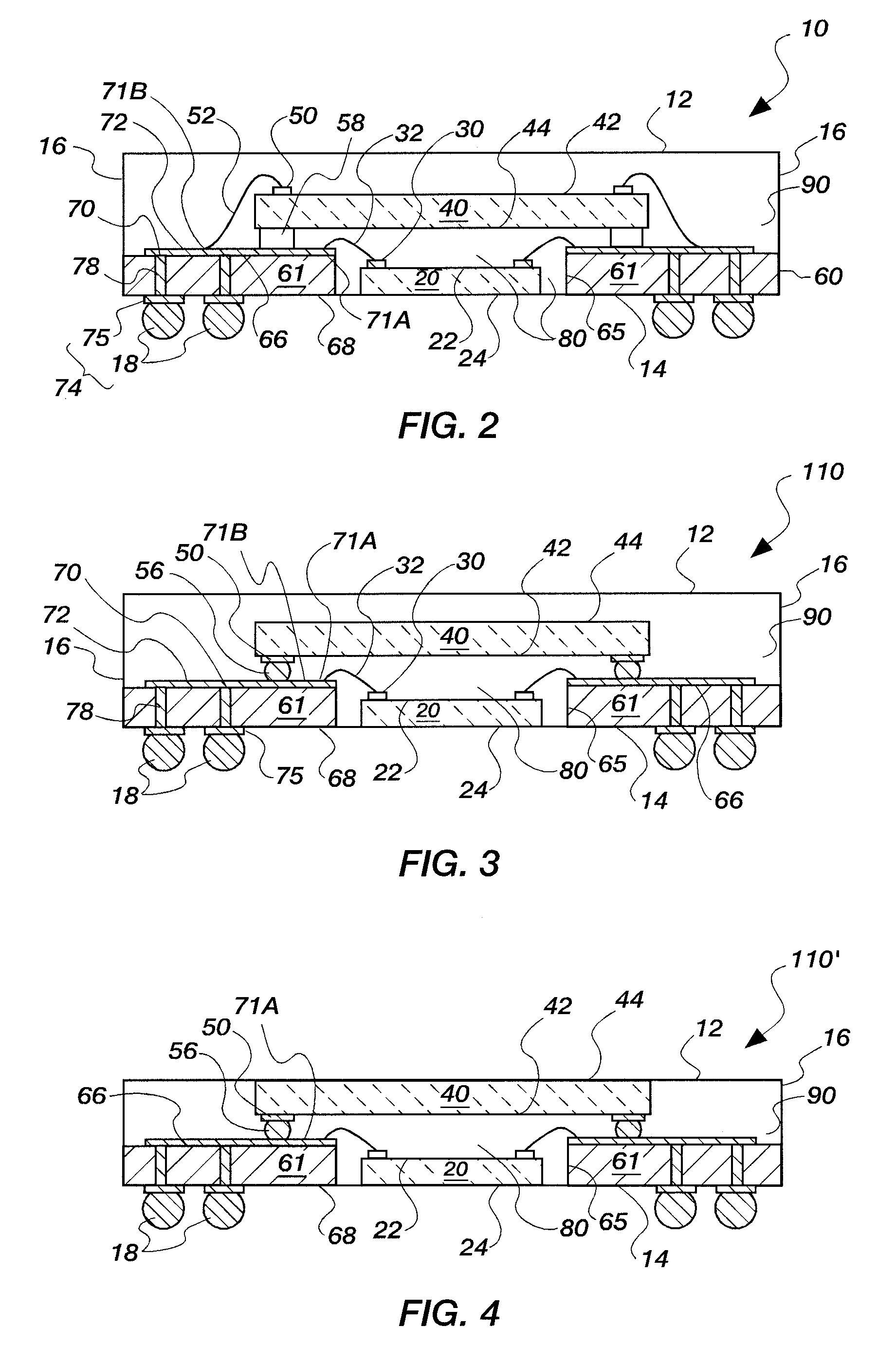Semiconductor device assemblies and packages including multiple semiconductor device components
a technology of semiconductor devices and components, applied in semiconductor devices, semiconductor/solid-state device details, electrical devices, etc., can solve the problems of large footprint devices, large size of devices, and inconvenient placement of semiconductor devices, so as to reduce the interposer area required for connection, reduce the thickness of the package, and facilitate the positioning of one or more semiconductor devices.
- Summary
- Abstract
- Description
- Claims
- Application Information
AI Technical Summary
Benefits of technology
Problems solved by technology
Method used
Image
Examples
Embodiment Construction
[0054]Referring to FIG. 1, a multichip semiconductor device package 10 according to the present invention is illustrated. As shown, FIG. 1 is an external view of the package 10 and is representative of a large number of possible device configurations exemplified in the figures following FIG. 1. Package 10 is illustrated as having an upper surface 12, a lower surface 14, and peripheral edges 16. Outer connectors 18, shown here as solder balls in a ball grid array (BGA) connection pattern, are depicted as being on the lower surface 14 of the package 10 and attached to contact areas 9 on a representative carrier substrate 8. The dimensions of the package 10 include length 11, width 13 and thickness 15 (exclusive of the distance outer connectors 18 protrude from the lower surface 14). The outline of the encapsulated package 10, comprising length 11 and width 13 dimensions, defines the “footprint” of the package 10. The package 10 shown in FIG. 1 represents a multidie package which has b...
PUM
 Login to View More
Login to View More Abstract
Description
Claims
Application Information
 Login to View More
Login to View More - R&D
- Intellectual Property
- Life Sciences
- Materials
- Tech Scout
- Unparalleled Data Quality
- Higher Quality Content
- 60% Fewer Hallucinations
Browse by: Latest US Patents, China's latest patents, Technical Efficacy Thesaurus, Application Domain, Technology Topic, Popular Technical Reports.
© 2025 PatSnap. All rights reserved.Legal|Privacy policy|Modern Slavery Act Transparency Statement|Sitemap|About US| Contact US: help@patsnap.com



